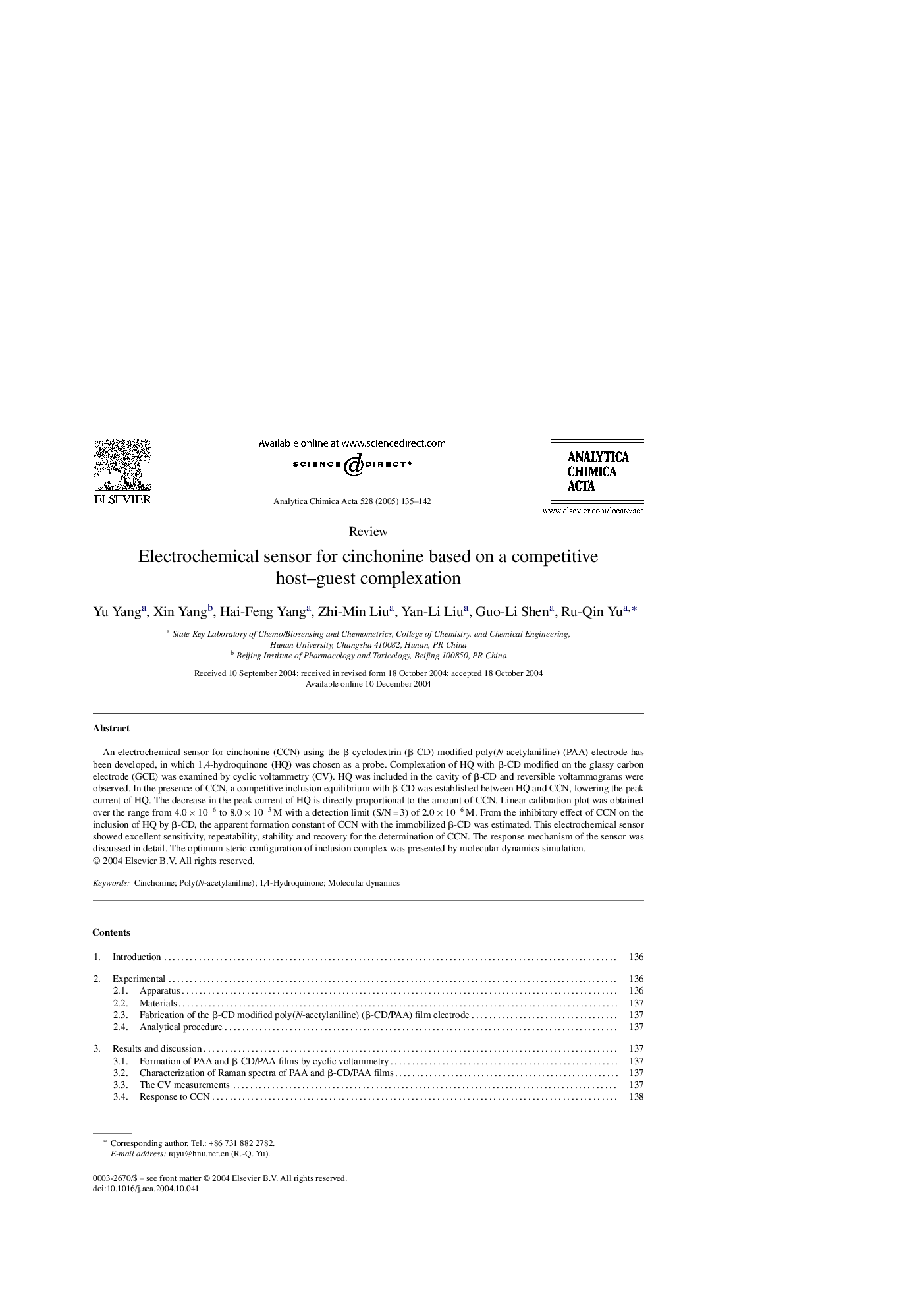| Article ID | Journal | Published Year | Pages | File Type |
|---|---|---|---|---|
| 10528770 | Analytica Chimica Acta | 2005 | 8 Pages |
Abstract
An electrochemical sensor for cinchonine (CCN) using the β-cyclodextrin (β-CD) modified poly(N-acetylaniline) (PAA) electrode has been developed, in which 1,4-hydroquinone (HQ) was chosen as a probe. Complexation of HQ with β-CD modified on the glassy carbon electrode (GCE) was examined by cyclic voltammetry (CV). HQ was included in the cavity of β-CD and reversible voltammograms were observed. In the presence of CCN, a competitive inclusion equilibrium with β-CD was established between HQ and CCN, lowering the peak current of HQ. The decrease in the peak current of HQ is directly proportional to the amount of CCN. Linear calibration plot was obtained over the range from 4.0 Ã 10â6 to 8.0 Ã 10â5 M with a detection limit (S/N = 3) of 2.0 Ã 10â6 M. From the inhibitory effect of CCN on the inclusion of HQ by β-CD, the apparent formation constant of CCN with the immobilized β-CD was estimated. This electrochemical sensor showed excellent sensitivity, repeatability, stability and recovery for the determination of CCN. The response mechanism of the sensor was discussed in detail. The optimum steric configuration of inclusion complex was presented by molecular dynamics simulation.
Related Topics
Physical Sciences and Engineering
Chemistry
Analytical Chemistry
Authors
Yu Yang, Xin Yang, Hai-Feng Yang, Zhi-Min Liu, Yan-Li Liu, Guo-Li Shen, Ru-Qin Yu,
